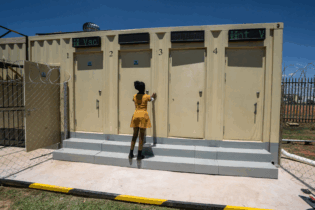A whopping 30MW annually could be saved by cash-conscious South African municipalities should their water treatment plants decide to switch off Eskom and switch on the electricity-generating potential of methane-rich biogas. That’s according to Jason Gifford, spokesman for the Energy Division of WEC Projects, a firm which is implementing South Africa’s first biogas to power plant on a municipal waste water treatment works. “Biogas is produced as a by-product of sewage treatment and holds the potential to reduce waste water treatment plants’ dependence on Eskom. Biogas can be used to fuel gas engine generators to provide a percentage of the electricity these plants use for operation,” said Gifford. Based on the fact that there are around 50 major municipalities in SA that would have a waste water treatment plant large enough to operate an effective biogas plant, a conservative estimate of the total electricity savings possible is a massive 30MW. “As far as energy savings go, a figure of this size will have a pretty significant impact on both their own costs and on the electricity provider’s drive towards energy efficiency. Our goal is to make our initial plant a shining example of how true energy efficiency can be achieved. Once the case can be effectively made for biogas, we anticipate a number of other treatment plants will follow this lead,” says Gifford. Explaining how the biogas is produced, he says that the treatment plants use a process known as anaerobic digestion. This is a natural process involving the decomposition of organic matter in the absence of oxygen. Traditionally, sewage treatment plants use this process to convert a large proportion of the solid sewage sludge, produced in the mainstream treatment processes into biogas. This reduces the sludge volume prior to disposal as well as ensuring a stable sludge is disposed of. He adds that due to the massive increases in the cost of electricity in recent times, it now makes financial sense to instead use biogas to produce electricity. The biogas to power plant provides waste water treatment works with an onsite energy source that should enable them to offset a portion of the costs of running the treatment plant directly from the grid. “Part of WEC Projects’ role is to clean the biogas so that it can serve as a fuel. It must be remembered that following anaerobic digestion, the biogas produced is what is termed ‘raw fuel’. In other words, it contains water, hydrogen sulphide and a variety of volatile organic compounds (VOCs) and siloxanes, which are chemical compounds that can damage the moving parts in engines. For the gas to be effective as a fuel, it therefore needs to be conditioned and have these contaminants removed,” states Gifford. This, he says, is because the cleaner the fuel, the better off the engine is over the long term and the lower the overall running cost. “This is the first municipal waste water biogas-to-energy project of its kind in the country. It will obviously have to prove its financial case, but we expect that once it has, many other treatment plants will consider implementing a biogas option of their own. After all, we would be able to set up a biogas plant like this at any waste water plant that operates anaerobic digesters. Suggesting that the fifty largest waste water treatment plants in the country could save a combined 30MW through this process is a conservative estimate. But even taking the conservative estimate, this is no small figure in these energy-constrained times,” he concludes.







